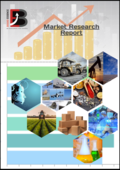latest market research report titled IT Managed Services in India 2015 describes the dynamics of managed IT service usage in India. IT managed services involves the outsourcing of various IT activities to an external managed service provider or MSP. It benefits the client organization to focus more on their core business operations rather than internal IT operations. IT managed services market in India is characterized by growing adoption of emerging technologies including cloud, mobility and big data and various services include infrastructure management, security management, network management, remote services management, among others.
Demand for IT managed services is driven by India's dominance in capturing a major share of the global IT services sector, coupled with need for specialization and cost reduction. Outsourcing of IT services results in 20-30% cost reduction depending upon the type of service outsourced. However, security and privacy concerns continue to be a challenge for IT managed service providers, since many organizations are apprehensive about sharing vital and confidential information. It also results in depending upon third-party service providers, which is viewed as a threat to effective management control. In future, with proper targeting of channel partnerships and further integration of cloud capabilities, IT managed services will be able to fully capitalize on opportunities present in different industry verticals.
Interested in this report?
Get your sample now!
Slide 1: Executive Summary
Macroeconomic Indicators
Slide 2: GDP at Factor Cost: Quarterly (2011-12 - 2014-15), Inflation Rate: Monthly (Jul-Aug 2013 - Nov-Dec 2013)
Slide 3: Gross Fiscal Deficit: Monthly (Feb 2013 - Jul 2013), Exchange Rate: Half Yearly (Apr 2014 - Sep 2014)
Slide 4: Lending Rate: Annual (2011-12 - 2014-15), Trade Balance: Annual (2010-11 - 2013-14), FDI: Annual (2009-10 - 2012-13)
Introduction
Slide 5-13: Introduction
Market Overview
Slide 14-22: Market Overview - India
Drivers and Challenges
Slide 23: Drivers and Challenges - Summary
Slide 24-27: Drivers
Slide 28-29: Challenges
Trends
Slide 30-34: Trends
Competitive Landscape
Slide 35: Porter's Five Forces Analysis
Slide 36-39: Competitive Benchmarking
Slide 40-59: Major Public Players
Slide 60-83: Major Private Players
Market Opportunities
Slide 84-85: ITMS in Government Sectors
Slide 86-87: ITMS in BFSI
Slide 88-90: ITMS in Retail
Slide 91-92: ITMS in Healthcare
Slide 93-95: ITMS Channel Partners
Strategic Recommendations
Slide 96-97: Recommendations
Appendix
Slide 98: Key Ratios Description
Slide 99: Sources of Information
Macroeconomic Indicators
1. GDP at Factor Cost: Quarterly (2011-12 - 2014-15)
2. Inflation Rate: Monthly (Jul-Aug 2013 - Nov-Dec 2013)
3. Gross Fiscal Deficit: Monthly (Feb 2013 - Jul 2013)
4. Exchange Rate: Half Yearly (Apr 2014 - Sep 2014)
5. Lending Rate: Annual (2011-12, 2012-13, 2013-14, 2014-15)
6. Trade Balance: Annual (2010-11, 2011-12, 2012-13, 2013-14)
7. FDI Annual (2009-10, 2010-11, 2011-12, 2012-13)
Introduction
1. Vendor Identification
Market Overview
1. Market Overview (India) - Market Size and Growth (Value-wise; 2014-2018e)
Drivers and Challenges
1. IT Services - Market Size and Growth (Value-wise; 2014-2018e)
Competitive Landscape
1. Competitive Benchmarking - Key Ratios of 3 Major Private Companies - Operational Basis (FY 2013)
2. Company profiles (All Companies)
a. Ownership Structure (All Private Companies, except EMC Data Storage Systems (India) Pvt. Ltd.)
b. Financial Snapshot (All companies)
c. Key Business Segments (All Public Companies)
d. Key Geographic Segments (All Public Companies)
Competitive Landscape
1. Public Trading Comparables (FY 2014)
2. Company Profiles (All Companies)
a. Company Information (All Companies)
b. Products and Services (All Companies)
c. Key People (All Companies)
d. Shareholders of the Company (All Private Companies, except EMC Data Storage Systems (India) Pvt. Ltd.)
e. Key Financial Performance Indicators (All Public Companies)
f. Key Ratios (All Companies)
g. Business Highlights (All Companies)
Appendix
1. Appendix
2. Sources of Information





